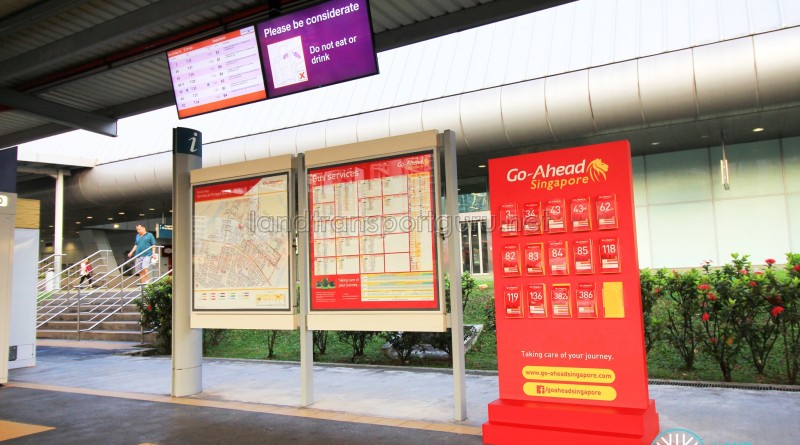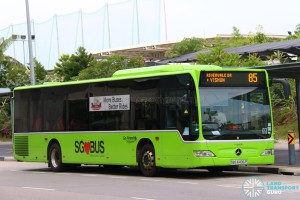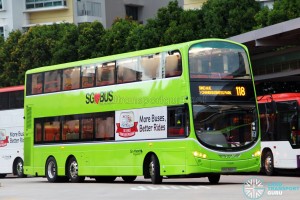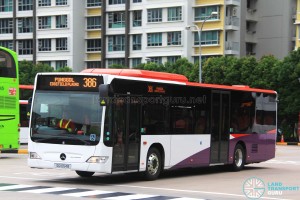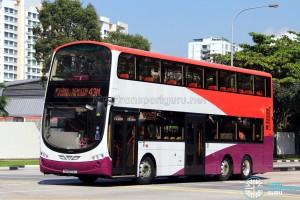It has been one week since Go-Ahead commenced bus operations in Singapore as the fourth public bus operator. The UK multi-modal passenger transport company took over 14 bus routes, as well as operations of Punggol Bus Interchange, from the incumbent SBS Transit on Sunday, 4 September 2016.
While bus operations at Punggol got off to a shaky start on Sunday, huge improvements were made over the next few days, with Go-Ahead buses arriving more punctually and service levels gradually returning to normal.

Ironing out headway issues
Headway issues (outside of those owing to bus bunching) are a common problem for incoming BCM bus operators as operational hiccups affect their ability to fulfill the operation of all scheduled trips. Reasons for this are aplenty, and can be due to lack of driver/vehicle availability, to the mismanagement of bus deployments, or simply other unforeseen circumstances.
Despite Go-Ahead’s use of multiple crossover deployments between bus services (i.e. one bus performing multiple bus services), bus services have become far more reliable as it fine-tunes its day-to-day bus operations, with far less incidents of headway issues.
Service Guides @ Punggol
The service guide rack at Punggol Interchange was emptied out by the first day, but despite periodic refills, the rack is empty most of the time. The interchange office, however, appears to be well-stocked.
Likely a move to prevent service guides from running out too quickly, commuters who need a copy can request for one at the interchange office.
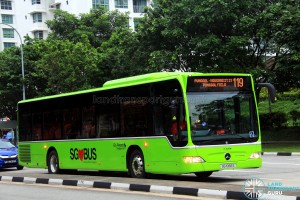
Double/single-deck bus redeployment
Single-deck and double-deck buses have been reshuffled between Services 118 and 119 in response to demand levels on both services. Initially, the high-demand Service 118 was operating with a portion of single-deck buses, while lower-demand Service 119 utilized a full fleet of double-deck buses. Buses have since been shuffled around to give Service 118 a full double-deck fleet, with Service 119 coping well with a near-full-fleet of single-decker buses.
EDS Formatting Issues
The Electronic Display Signages (EDS) on most buses have been reformatted by Go-Ahead. On the first few days of service, a few Go-Ahead buses have been running with their old SBS Transit formatting.
Driver Unfamiliarity
Reported incidents of drivers going off-route are not uncommon for new bus operators, and as bus drivers become more familiar with their routes, incidents of such are expected to decrease.
Logging in to CFMS
Nearly all buses are logged in to the Common Fleet Management System (CFMS), a huge improvement from the early days of Go-Ahead when many bus drivers unfamiliar with the system did not log in, predictably resulting in the Bus Operations Control Centre (BOCC) having trouble tracking buses and hence maintaining service reliability.

Advertising standards
Under Moove Media, Go-Ahead buses have been spotted in full-body commercial advertising, alongside full-body Government-related advertising. This form is neater than Tower Transit’s bus adverts which cover only the rear two-thirds of the bus.
Update 230916: The advert wrap has since been removed for breach of guidelines. Refer to Commercial Advertising on Bus Contracting Model Buses.
Buses without Logo
A minor cosmetic issue, several buses have yet to be stickered with temporary Go-Ahead company logos, and currently only bear the SBS Transit base livery. Buses without temporary logos are a common occurrence, as evident during the Bulim Bus Package takeover.
In addition, SBS3302K was running on launch day (4th September) with the SBS Transit logo on the rear, apparently not removed.
